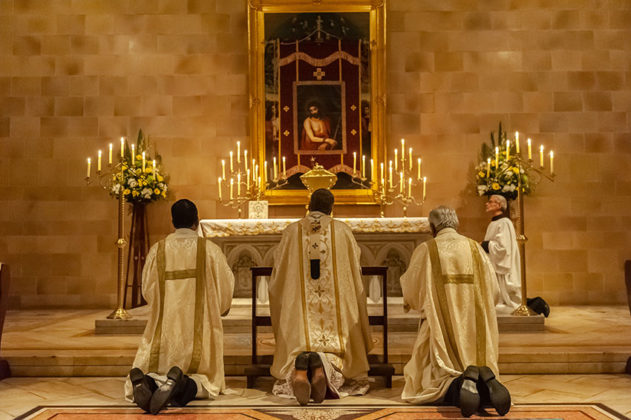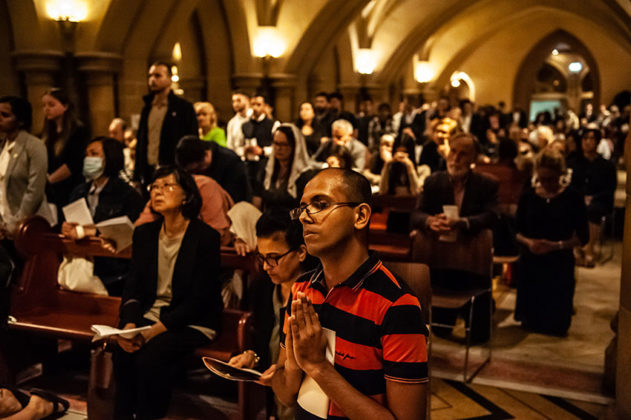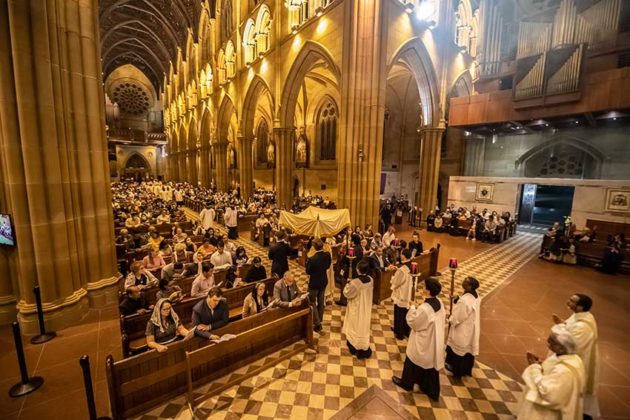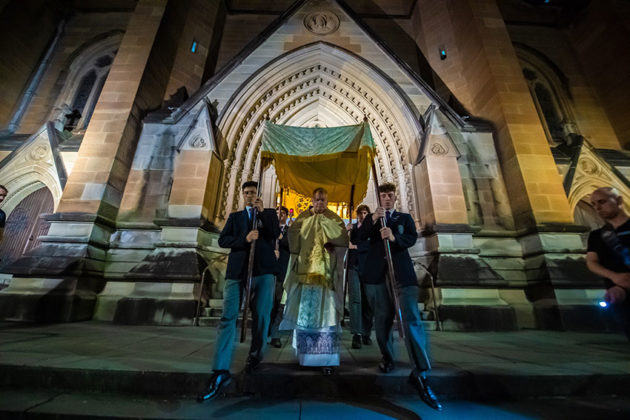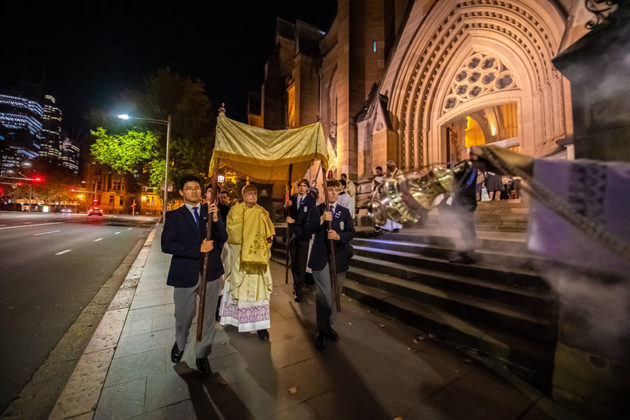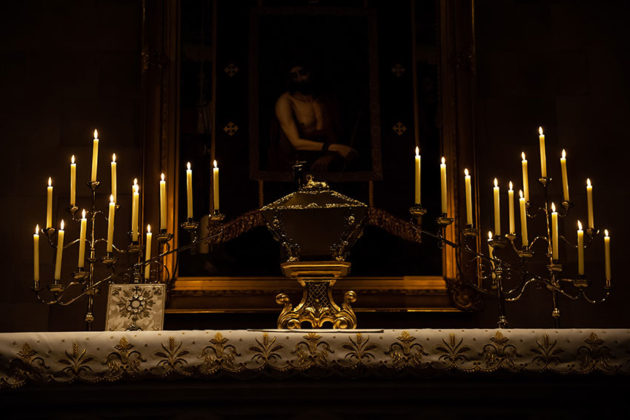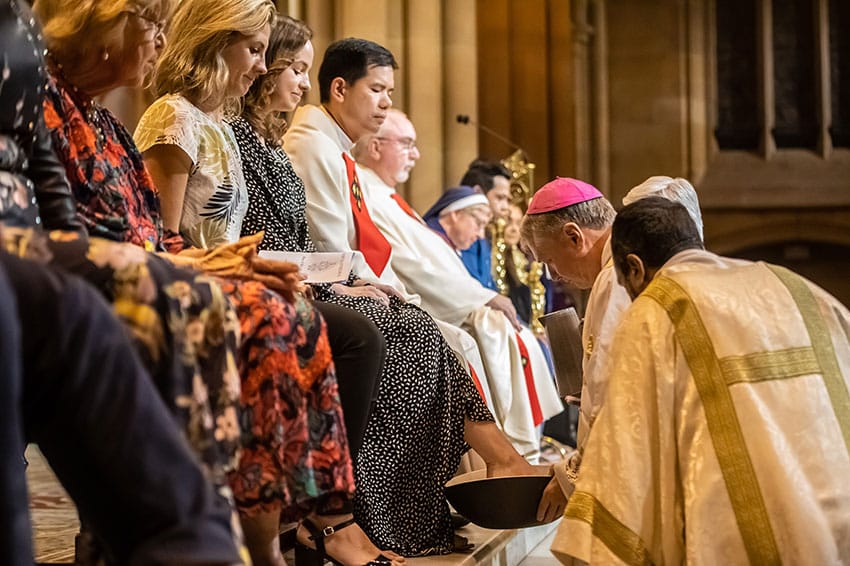
From a year of Covid that has taken millions of lives to an apparent proliferation of problems in numerous places and situations throughout global society, the world is in a state of crisis, Archbishop Anthony Fisher OP told worshippers attending the Mass of the Commemoration of the Last Supper on Maundy Thursday evening in St Mary’s Cathedral.
“For the past year, waves of COVID-19 have infected more than 125 million people and cost nearly 3 million lives,” he said during his homily at the Mass which traditionally launches the Easter Triduum (three days) of liturgies and commemorations of Christ’s sufferings, Passion, crucifixion and resurrection.
An estimated 650 or more people attended the Mass, one of the largest congregations the Cathedral has seen in the last 14 months since lockdowns and public health restrictions severely affected Christian gatherings around the nation and throughout the world.
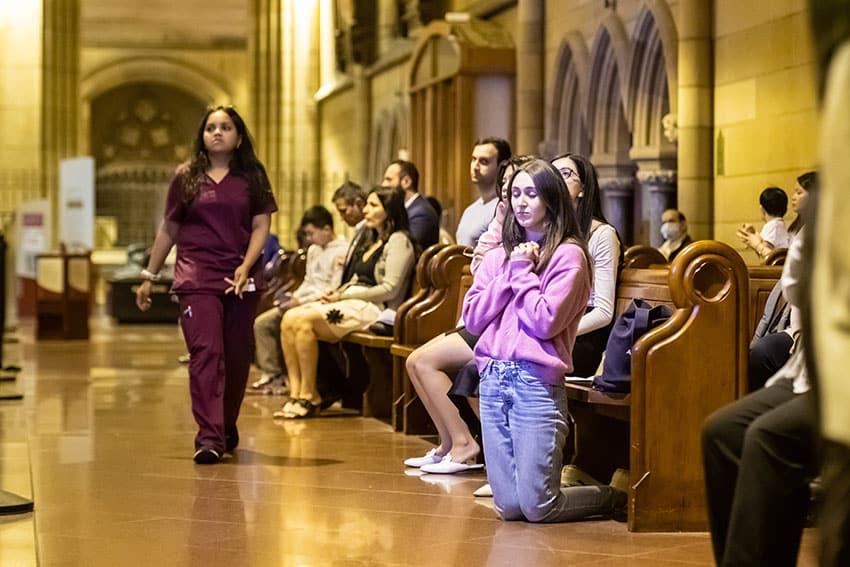
A world in crisis
“Lockdowns and restrictions have been commonplace and, even here in Australia where we’ve been spared the worst of it, businesses and jobs have been lost, people been separated, many have suffered anxiety and loneliness,” the Archbishop said in his homily.
“That plague was bookended by bushfire and flood that many say presages a full-blown climate emergency. The media are full of crisis talk: they tell us there’s a crisis in aged care, rental markets, the tourism industry; a substance-abuse crisis, energy crisis, mental health crisis; crises of sexual violence, refugees, Indigenous well-being, and more… Meanwhile, they tell us, there’s been a collapse of respect for institutions like the royal family, Church, democracy, banks, the military, the justice system, the media… And underneath all this is a crisis of confidence, identity, leadership and trust…”
However, he said, at this unique moment in the year, as Christians commemorate Christ’s death and resurrection they enter into a crisis unique to their faith that will tear the world apart.
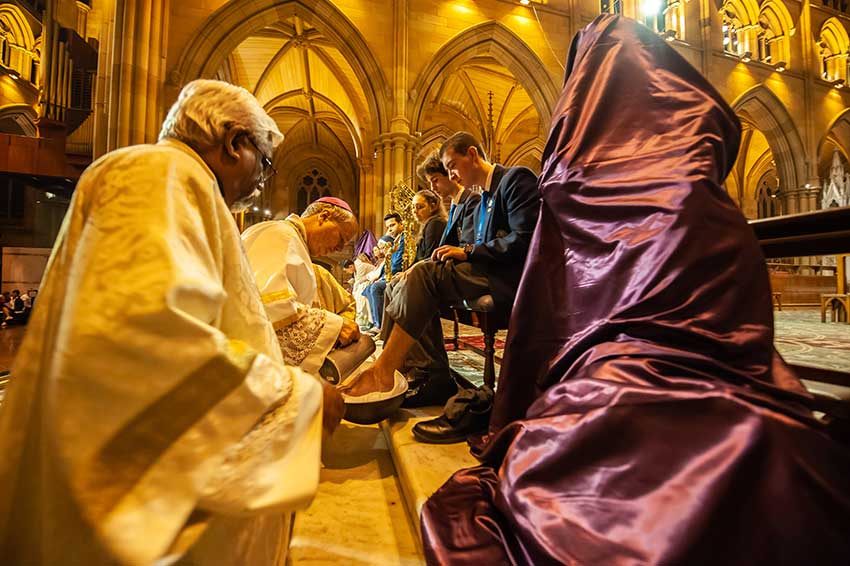
The crisis of the Crucifixion
“There will be trials and the Son of Man will go to a terrible fate. Men will flee in horror and graves open. The world will be plunged into darkness and the veil of the Temple rent asunder. If tomorrow’s is a crisis for Christ himself, and Easter a crisis is for all humanity, tonight’s is a crisis for Jesus’ followers – the Church – a crisis of faith,” he said.
But, he pointed out, crisis can mean either death and dissolution or recovery and renewal; it is the latter that Jesus delivers through his suffering and death.
Archbishop Fisher referred to the ancient Jewish historian Josephus, believed to have been born in Jerusalem only three or four years after Jesus died and who lived until the end of the First Century.
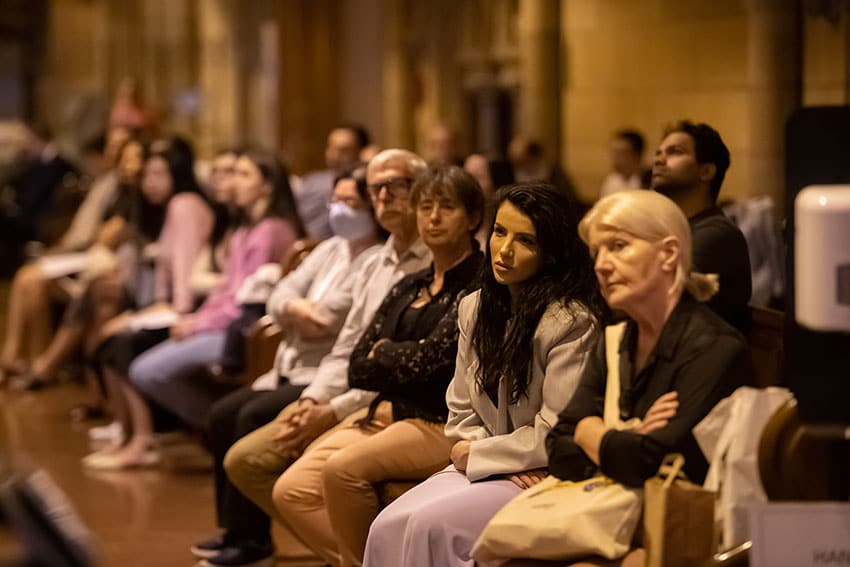
Stubborn Christian belief
“This same Josephus wrote of a wise man, miracle-worker and teacher named ‘Jesus the Christ’, whom Pilate had crucified at the prompting of the Jewish leaders, but whom the Christians claimed had risen from the dead,” Archbishop Fisher said.
“These stubborn first Christians seemed to believe that Jesus’ light could not be extinguished, and that the light that is faith in Him could be seen across the seas, beyond the grave, to the ends of the space and time. Tonight Christ our Light and lighthouse,[i] institutes that greatest Sacrament of Faith, so that we might approach Him every year, every week, every day if we like, saying “Lord, I believe; help my unbelief”, and receive His substance into ours.
“It’s in dark times of crisis that we most need faith, for faith casts light and assures hearts. So having deepened that faith through hearing the Scriptures, enacted that faith in our service to each other, nourished that faith on Christ Himself, we will take Him out into the dark places, to the crises of our world and ourselves, through our Gethsemanes to the place of our Repose. As we do, we pray: Lord enlighten my dim mind, warm my gloomy heart, increase my little faith. Carry me through the Thursday Passovers in my life, the Friday darkness over all my world, the Saturday loneliness of the grave. Bring me to the bright light of Easter and raise me out of my tomb with Yourself forever!
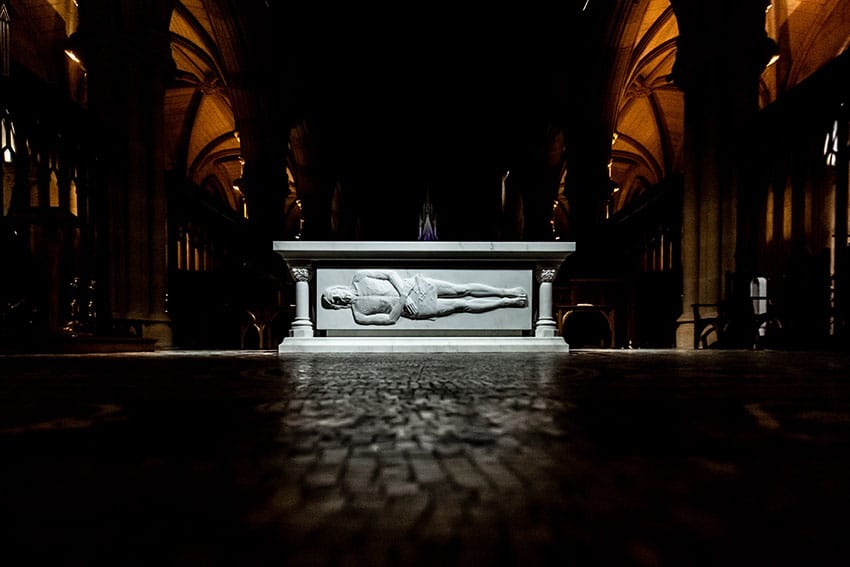
Cathedral silent in prayer
During the ceremony, Archbishop Fisher washed the feet of members of the congregation, emulating the example of Jesus who washed the feet of his disciples at the Last Supper, urging them to love one another and serve the world as he had.
At the conclusion of the Mass, he removed the Blessed Sacrament from the Cathedral tabernacle, leaving its doors open as he processed out onto College Street. Aside from the silence of the cathedral, the only noise came from the passing traffic on the street.
Accompanied by students carrying a canopy above his head, the Archbishop placed the Sacrament in an altar of repose in the crypt of the cathedral before praying silently in front of it. The traditional practice symbolises Christ’s decision to enter into his Passion which sees his body lie in the tomb for three days until the day of the Resurrection on Easter Sunday morning.

